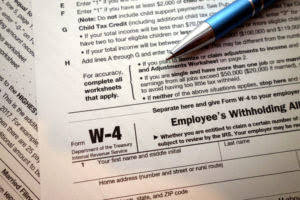29 Oct Construction Invoices: Best Practices & Billing Procedures
This article is all about letting you know the 7 effective invoicing methods to bill clients. And the construction industry’s best billing practices that most successful construction contract companies follow. It may seem like a hassle, but this is a crucial part of ensuring accuracy.
- Whether you’re sending a quote, invoice, or estimate, clients will instantly recognize the format, making them feel confident in your ability to handle their business efficiently.
- Create your free account and join thousands of professionals runningtheir businesses with Knack.
- The best way to ensure your business remains compliant with legal requirements is to hire an accountant.
- These differences help construction companies maintain financial accuracy and compliance across multiple projects.
- This free invoice template was designed for use on construction projects where you are working under a lump sum contract.
Downloads
To do this effectively, you need a structured approach that covers budgeting, expense tracking, invoicing, revenue recognition, and financial reporting. More accurate estimates help you to get a better scope of the work that needs to be done and they help your customers understand what they’re paying for upfront. This will help eliminate confusion for your client at the end of the job and make the payment process go faster. Your billing process can significantly impact your customer’s experience. For example, a professionally formatted invoice for construction work can reduce billing questions and improve clarity.

Basic Construction Invoice Template
With instant access to financial data, project managers can construction invoice make faster, smarter decisions and avoid budget overruns. Instead of waiting until the project is completed, bill clients based on completed work at specific milestones. This method, called progress billing, keeps cash flow steady throughout the project.

Download one of our construction invoice templates

As a result, your customers can see precisely what they are paying for and how much it costs in black and white, which mitigates the risk of a misunderstanding or disagreement. An important element of your construction business is to consistently write an invoice for construction work you perform. Making payment demands shouldn’t be the first step when payment is a little late, but it could become necessary. Keep in mind Insurance Accounting though – owners and customers don’t typically take kindly to lien threats. While a notice of intent to lien is a great payment recovery tool, it’s important that a party who sends one can back up their payment claim with sufficient documentation. It’s a good idea to provide enough information to support the requested payments, but not too much where the invoice becomes illegible.
The fee may be calculated as a percentage of the total contract cost or a fixed fee set at the beginning of the project. Owners may offer contractors financial incentives to keep costs low to minimize the uncertainty of cost-plus contracts. Use invoice management software like QuickBooks, FreshBooks, or Xero to streamline invoicing and payment tracking.
- Unit pricing can be used in combination with any other billing method to get really granular with costing by detailing hours of work, cubic footage of concrete, and the equipment used.
- A contractor or sub’s payment application may include a number of invoices from different sub-tier businesses and vendors.
- Use payment applications and financial documentation to support your invoices, ensuring clients approve them quickly.
- The template will automatically calculate individual cost subtotals, as well as the total, at the bottom of the template.
- If the contractor will be giving the client a certain number of days to pay, list this in the “payment is due within __ days” field.
- Whatever provides a gentle reminder that a payment is coming up (and how to pay it).
- An invoice is a request for payment issued after the goods or services have been delivered.
- More accurate estimates help you to get a better scope of the work that needs to be done and they help your customers understand what they’re paying for upfront.
- In today’s competitive construction industry, precision, efficiency, and adaptability are key to staying ahead.
- Sometimes, a combination of billing methods is necessary to accurately capture the work done and to ensure fair payment.
- To fix these issues completely, construction businesses need reliable financial tracking, clear payment systems, and accurate cost reporting.
Construction project accounting tracks What is bookkeeping and manages all financial activities of a construction project, including costs, revenue, budgeting and forecasting, and financial performance. It ensures that expenses stay within budget and that payments are properly recorded, preventing financial mismanagement. Construction billing can be complex, with various methods used to track project progress and invoice clients. To ensure accurate and timely payments, it’s essential to grasp the different billing models employed in the construction industry.
No Comments